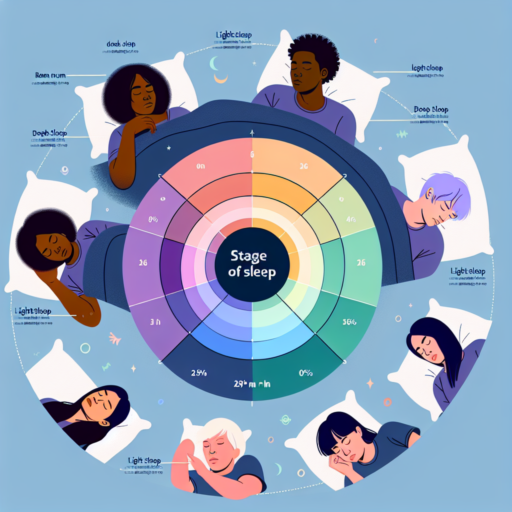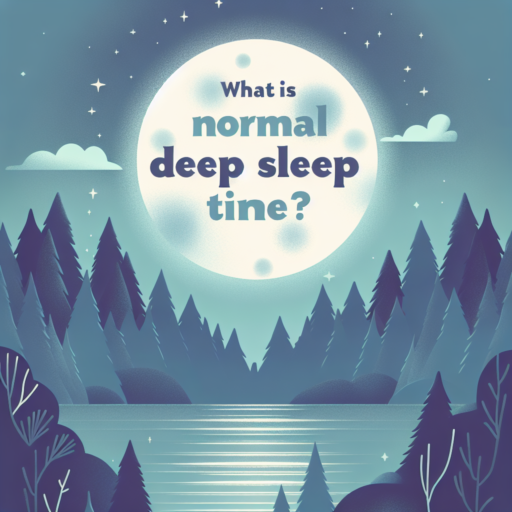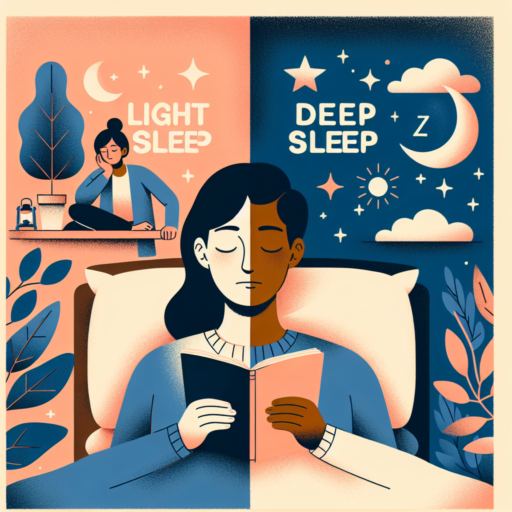How long should you spend in each sleep stage?
Understanding the optimal duration one should spend in each sleep stage is crucial for improving sleep quality and overall health. The human sleep cycle is divided into several stages: NREM (Non-Rapid Eye Movement) stages 1, 2, and 3, and REM (Rapid Eye Movement) sleep.
The Ideal Sleep Stage Durations
During a typical sleep cycle, an adult should aim to spend approximately 75% of their time in NREM sleep, which includes stages 1 through 3, and the remaining 25% in REM sleep. Specifically, stage 1 should last for 1-5% of total sleep, serving as the transition from wakefulness to sleep. Stage 2, the largest chunk of the sleep cycle, should account for 45-55%, due to its role in physical recovery and memory consolidation. Stage 3, also known as deep sleep, is crucial for physical healing and growth, making up about 13-23% of your sleep. Finally, REM sleep should take up 20-25% of the sleep cycle, being essential for cognitive functions like creativity, learning, and emotional processing.
Each sleep stage plays a unique role in the body’s restorative processes, and the amount of time spent in each stage can vary significantly among individuals. Factors such as age, lifestyle, and health conditions can influence these durations, with infants and children spending a higher percentage of their sleep time in REM and deep sleep compared to adults.
It’s important to understand that these percentages are averages and can be impacted by various factors including stress, sleep disorders, and overall sleep quality. Tracking sleep through wearable technology or sleep studies can provide insights into one’s sleep stages and help identify any discrepancies from these ideal durations.
How many hours of REM sleep do you need?
The recommended amount of REM (Rapid Eye Movement) sleep varies across different age groups, with adults typically needing between 20% to 25% of their total sleep time in this vital stage. Given that the average adult should aim for 7 to 9 hours of sleep per night, this translates to roughly 1.4 to 2.25 hours of REM sleep. This stage is crucial for various aspects of health and well-being, including cognitive functions and emotional health.
Factors influencing REM sleep include age, lifestyle, and overall health. For instance, newborns spend about 50% of their sleep in the REM stage, which supports their brain development. However, as we age, the percentage of sleep time we spend in REM gradually decreases. Lifestyle choices such as alcohol consumption and smoking can also significantly impact the quality and quantity of REM sleep, potentially reducing the hours of REM sleep one can achieve.
Increasing your REM sleep can be essential for improving memory and emotional regulation. Strategies to enhance REM sleep include maintaining a consistent sleep schedule, creating a bedtime routine that promotes relaxation, and ensuring your sleeping environment is conducive to quality sleep. Monitoring your sleep patterns through wearable technology or sleep apps can also help in understanding your personal REM sleep needs and adjusting your habits accordingly.
What does a healthy sleep cycle look like?
A healthy sleep cycle, often referred to as sleep architecture, plays a critical role in our overall well-being. It comprises several stages, including both REM (Rapid Eye Movement) and non-REM sleep, which alternate cyclically throughout the night. Understanding the composition of these stages is crucial for recognizing what a healthy sleep pattern entails.
The Stages of a Healthy Sleep Cycle
The cycle begins with the non-REM phase, which can be divided into three stages: light sleep (N1 and N2) and deep sleep (N3). During the initial stages, your body starts to relax, your heartbeat and breathing slow down, and you become less aware of your surroundings, making it easier to wake you. However, in the deep sleep stage, your body begins essential maintenance work on muscles and tissues, strengthens the immune system, and builds up energy for the next day.
Following the deep sleep stage, the cycle moves into REM sleep, which usually occurs for the first time about 90 minutes after you fall asleep. This phase is notable for rapid eye movement, increased brain activity, vivid dreams, and temporary paralysis of the limbs to prevent acting out dreams. A complete sleep cycle lasts about 90 to 110 minutes, with a healthy night’s sleep encompassing 4 to 6 cycles, depending on the individual’s needs.
Achieving a Balanced Sleep Cycle: It’s not only the duration of sleep that matters but also its quality and the balance between the different stages. A disruption in this balance can affect the body’s ability to recover, impacting cognitive functions, emotional regulation, and physical health. Therefore, prioritizing a consistent sleep schedule and creating an environment conducive to restful sleep is essential for maintaining a healthy sleep cycle.
No se han encontrado productos.




